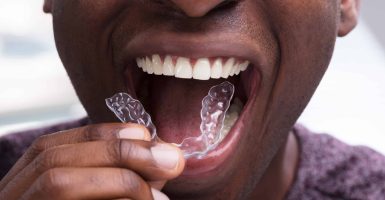Tetracycline stains can be a frustrating dental concern that affects the appearance and confidence of those who experience it. These stubborn stains result from the use of tetracycline antibiotics during tooth development and can be challenging to remove with traditional teeth whitening methods. However, there is hope for achieving a brighter, whiter smile. In this blog post, we will explore tetracycline stains, their causes, and effective strategies to fight back and restore your smile’s radiance.
Understanding Tetracycline Stains:
Tetracycline stains occur when tetracycline antibiotics, commonly prescribed for bacterial infections, are taken during tooth development, especially in childhood. The medication can become incorporated into the developing tooth structure, resulting in intrinsic stains that are embedded within the tooth enamel and dentin. These stains can range in color from yellowish to dark gray or even brown, making them highly noticeable.
Challenges in Whitening Tetracycline Stains:
Tetracycline stains pose a unique challenge because they are not surface stains that can be easily removed with traditional teeth whitening methods. The intrinsic nature of these stains makes them more resistant to conventional whitening treatments. Over-the-counter whitening toothpaste, strips, and rinses may not effectively address tetracycline stains, leaving individuals feeling discouraged.
Effective Strategies for Brightening Tetracycline-Stained Teeth:
While tetracycline stains can be stubborn, there are effective strategies that can help in achieving a brighter, whiter smile:
- Professional Teeth Whitening: Consult with a dental professional who specializes in cosmetic dentistry. They can offer professional-grade teeth whitening treatments, such as in-office bleaching or take-home custom trays with stronger bleaching agents, which may help lighten tetracycline stains.
- Dental Veneers: For more severe tetracycline stains or cases where teeth whitening is not effective, dental veneers are a popular option. Veneers are thin, custom-made shells that are bonded to the front surface of the teeth, concealing stains and transforming the appearance of your smile.
- Dental Bonding: Dental bonding involves applying a tooth-colored resin material to the stained teeth and shaping it to match the natural tooth structure. This can help improve the appearance of tetracycline stains and provide a more uniform smile.
- Crowns: In cases of severe tetracycline staining, dental crowns may be recommended. Crowns cover the entire tooth and can provide a natural-looking, stain-resistant solution.
Consultation with a Dental Professional:
It’s important to schedule a consultation with a dental professional experienced in treating tetracycline stains. They will evaluate the extent of the staining, discuss your treatment goals, and recommend the most suitable options for your unique situation. Your dentist will guide you through the process, answering any questions and addressing your concerns.
Tetracycline stains can present a challenge in achieving a bright, white smile, but effective strategies are available to fight back and restore your confidence. By consulting with a dental professional, you can explore options such as professional teeth whitening, dental veneers, dental bonding, or crowns to address tetracycline stains and achieve the smile you desire. Remember, each case is unique, and a personalized treatment plan will be tailored to meet your specific needs. Embrace the opportunity to regain a brighter, whiter smile, leaving the impact of tetracycline stains behind and embracing a renewed sense of self-assurance.




